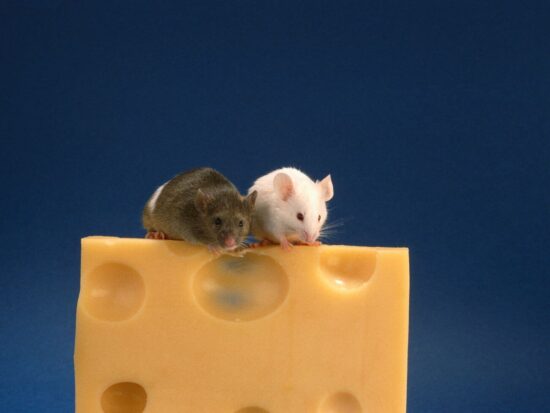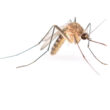Everyone knows the classic image: a little mouse sitting next to a big wedge of yellow cheese with holes in it. This scene shows up everywhere, from Tom and Jerry cartoons to children’s books. Most people think mice like cheese more than any other food. But is this really true?
The answer might surprise you. While mice will eat cheese if they find it, science shows that mice like cheese much less than other foods. In fact, many mice actually avoid cheese when they have other choices.
What Science Really Says About Mice and Cheese
Scientists have done several studies to test whether mice like cheese. The results are pretty clear: mice don’t go crazy for cheese like cartoons make us believe.
Dr. David Holmes from Manchester Metropolitan University found that mice don’t like cheese at all. A 2006 study at the University of Manchester showed that rats and mice are actually more likely to turn their noses up at cheese than other available foods since many cheeses have a strong smell that rodents find off-putting.
The BBC even did a simple test where they put peanuts and cheddar cheese near mice. The cheddar cheese was entirely avoided by the mice. Instead, they ate the nuts.
So if mice like cheese is just a myth, what do they actually enjoy eating?
- Designed to humanely capture mice without causing any harm
- The trap cage is easy to set up and use
- The trap cage has a large capacity, allowing it to trap multiple mice at once
- Made of high-quality materials that are durable and reusable
What Mice Really Want to Eat
What house mice really seem to love is peanut butter. They have a good sense of smell, and it has a pretty strong odor. Plus, peanut butter has plenty of protein and fat, which mice find attractive.
According to Terminix, “Of all the foods included on the mouse menu, chocolate is hands-down the favorite.” Peanuts have approximately 50% more calories than the cheese, so the mice are choosing a food that will give them energy for longer.
Here’s what mice actually prefer:
Sweet Foods: Scientific studies have shown that mice tend to prefer foods with lots of sugar. They love chocolate, fruits, and anything with a sweet taste.
High Energy Foods: Mice need lots of energy, so they go for foods packed with calories. Peanut butter is perfect because it’s full of fat and protein.
Natural Foods: Outside in nature, they’re known for eating things like seeds, nuts, small fruits, and insects, such as beetles and caterpillars.
Strong Smelling Foods: Mice have a keen sense of smell; they can detect odors from a distance. Foods with strong, appealing smells attract them more than bland ones.
Why Don’t Mice Like Cheese?
There are several reasons why the idea that mice like cheese doesn’t match reality:
The Smell Problem: Mice have very sensitive noses. The sharp, pungent smells of most cheeses would likely tend to drive mice away rather than draw them near. Many cheeses have a strong smell that mice find unpleasant.
Not Sweet Enough: Cheese consists of proteins that aren’t usually sweet. Since mice prefer sugary foods, cheese just doesn’t appeal to their taste buds.
Better Options Available: When mice have choices, they pick foods that give them more energy and taste better to them.
Where Did This Myth Come From?
The belief that mice like cheese probably started a long time ago. It likely dates back to the middle ages, before the invention of modern refrigeration. Back then, food storage was much more complex than simply sticking something in the refrigerator.
Medieval families hung meat from hooks on the ceiling, stored grains in bags or bins and left large wheels of cheese out with just a coating of wax or a layer of cheese cloth for protection.
During this period, it’s possible that hungry mice simply dug into whatever food they could access. Meat hanging from the ceiling was tough to reach, so mice likely noshed on grains and cheese. Stealing a few morsels from a bag of grains leaves little evidence in many cases, while biting into a hunk of cheese leaves behind tell-tale teeth marks.
So mice ate cheese because it was easy to get to, not because they loved it. People noticed the bite marks in their cheese and assumed mice must really enjoy it.
How Cartoons Made It Worse
Another theory to explain the mouse-cheese connection is based solely on image. There’s just something convenient about sketching a mouse lingering near a perfectly-triangular wedge of cheddar, complete with just a few holes for decorations. It’s a much more effective image than a mouse and a dab of peanut butter or a few grains of rice.
Tom and Jerry cartoons, which started in 1940, really helped spread this idea. Jerry is a brown anthropomorphic house mouse… He also doesn’t like to leave houses or hotels when told to do so and doesn’t like mouse traps or being chased by Tom but does like cheese. These popular cartoons showed millions of people that mice like cheese, even though it wasn’t based on real mouse behavior.
Other shows, movies, and books kept using this idea because it was already familiar to people. Even today, fans in China will be able to participate in a pop-up event celebrating Jerry’s favorite food, CHEESE!
What This Means for Catching Mice
If you’re trying to catch mice in your house, forget about using cheese as bait. The rodents are primarily nut and seed eaters, so the mouse trap bait they are most strongly attracted to is peanut butter or hazelnut spread.
Best Baits for Mouse Traps:
- Peanut butter (the top choice)
- Chocolate pieces
- Nuts
- Dried fruits
- Bacon bits
A pea-sized amount of mouse trap bait is just right – enough to attract mice, but not so much that they can eat it without springing the trap.
Why Peanut Butter Works So Well: Peanut butter is a high-fat and high-protein food that can provide mice with some nutritional benefits. It also sticks to the trap, so mice can’t just grab it and run away.
Tips for Pet Mouse Owners
If you have a pet mouse, you might wonder if it’s okay to give them cheese as a treat. While pure peanut butter is not toxic for mice, it has other factors that diminish its appeal as a treat or nutritional item for your pet mouse.
Safe Cheese Options: If you do want to try and feed your pet mouse or rat cheese, you should go with a milder option like cheddar, gouda, or colby.
Avoid Soft Cheese: Soft cheese can actually be quite dangerous to them. Mice don’t have molars that allow them to break down foods so there’s a higher chance of them choking on a soft and gooey hunk of cheese.
Better Treat Ideas:
- Small pieces of fresh fruit
- Vegetables like carrots or broccoli
- Seeds and grains
- High-quality mouse food pellets
- Designed to humanely capture mice without causing any harm
- The trap cage is easy to set up and use
- The trap cage has a large capacity, allowing it to trap multiple mice at once
- Made of high-quality materials that are durable and reusable
The Science Behind Mouse Eating Habits
Mice are omnivorous animals, meaning they consume both plants and animals. In general, mice will eat a wide variety of food items and aren’t very picky when it comes to their diets.
Rats and mice are opportunistic foragers, which means that most things that will readily supply nutrition will meet their not-so-exacting standards. This means they’ll eat whatever they can find, but they still have preferences.
Research has shown that mice prefer sweeter foods over cheese. This is because mice have a heightened sensitivity to sweet tastes due to their biology and feeding habits.
Real Research Results
Scientists have done multiple studies over the years to test mouse food preferences:
1950s German Study: The researchers set up a series of experiments in which they presented mice with a variety of foods, including cheese, and observed their eating habits. The results of the study showed that the mice did not demonstrate a preference for cheese over other foods.
2008 Wild Mouse Study: Researchers set up a series of experiments to determine the dietary preferences of wild mice. The results of the study showed that the wild mice preferred seeds, fruits, and other plant-based foods over cheese.
2011 Lab Mouse Study: The results of the study showed that the laboratory mice did indeed show a preference for cheese over other foods, though the preference was not as strong as the preference for other food sources.
Even when mice did eat cheese in studies, they liked other foods much better.
Why This Myth Matters
Understanding what mice really like helps in several ways:
Better Pest Control: Knowing that mice prefer peanut butter and chocolate means you can catch them more effectively.
Healthier Pets: Pet mouse owners can give their animals treats they actually enjoy and that are good for them.
Teaching Kids: Children can learn the difference between what they see in cartoons and what’s really true.
General Knowledge: It’s always good to know the facts instead of believing something just because it’s popular.
The Bottom Line
So, do mice like cheese? The simple answer is not really. While mice will eat cheese if they’re hungry and it’s the only food around, they prefer many other foods much more. Peanut butter, chocolate, nuts, and sweet fruits are all much more appealing to mice than cheese.
This shows us that sometimes what everyone “knows” isn’t actually true. The idea that mice like cheese came from old storage methods and was made popular by cartoons, not from watching real mouse behavior.
Next time you see a cartoon mouse with a piece of cheese, you’ll know the real story. And if you ever need to catch a mouse, skip the cheese and reach for the peanut butter instead. Your success rate will be much higher, and you’ll be using science instead of myths to solve your problem.



